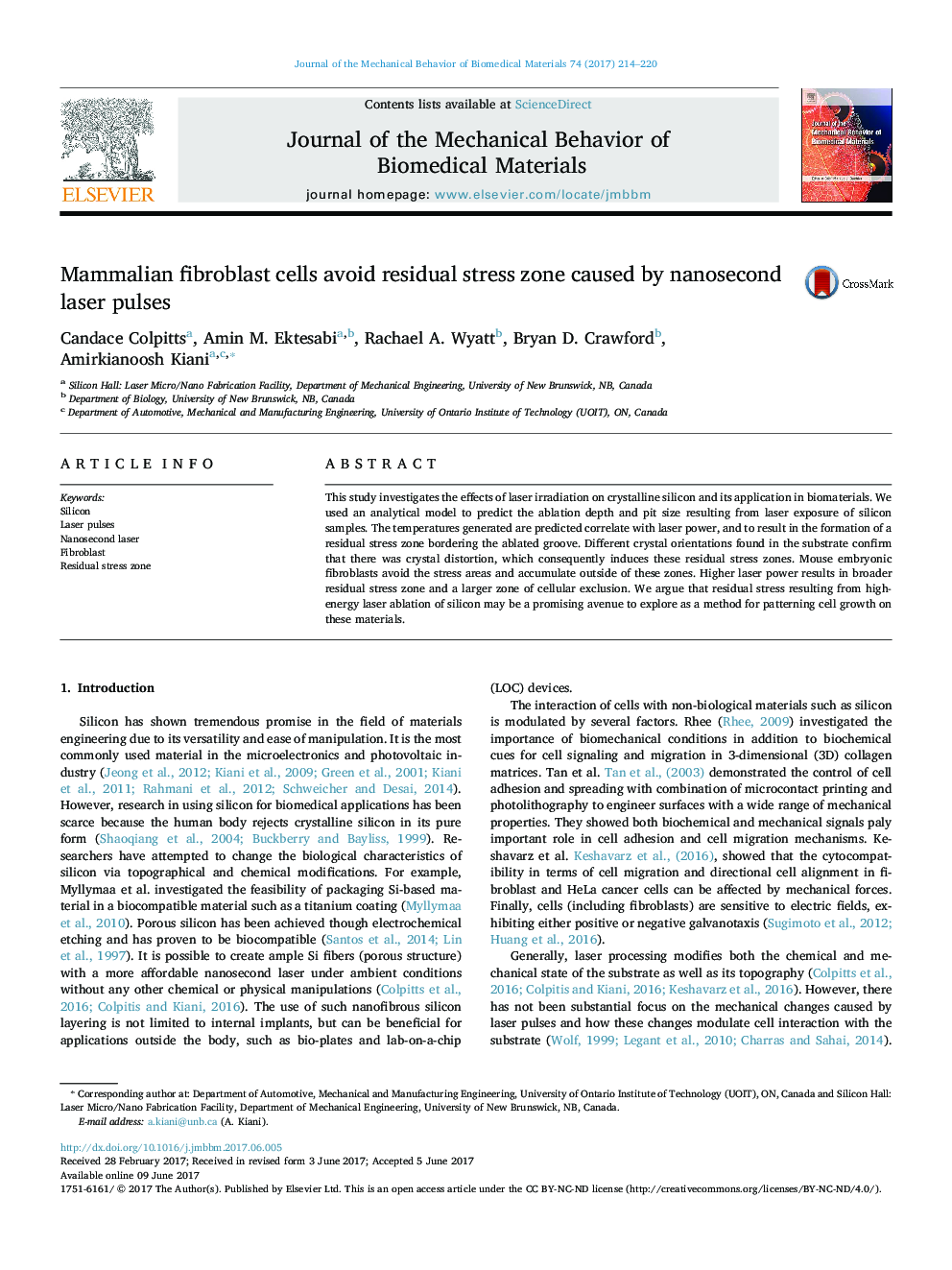| Article ID | Journal | Published Year | Pages | File Type |
|---|---|---|---|---|
| 5020412 | Journal of the Mechanical Behavior of Biomedical Materials | 2017 | 7 Pages |
This study investigates the effects of laser irradiation on crystalline silicon and its application in biomaterials. We used an analytical model to predict the ablation depth and pit size resulting from laser exposure of silicon samples. The temperatures generated are predicted correlate with laser power, and to result in the formation of a residual stress zone bordering the ablated groove. Different crystal orientations found in the substrate confirm that there was crystal distortion, which consequently induces these residual stress zones. Mouse embryonic fibroblasts avoid the stress areas and accumulate outside of these zones. Higher laser power results in broader residual stress zone and a larger zone of cellular exclusion. We argue that residual stress resulting from high-energy laser ablation of silicon may be a promising avenue to explore as a method for patterning cell growth on these materials.
